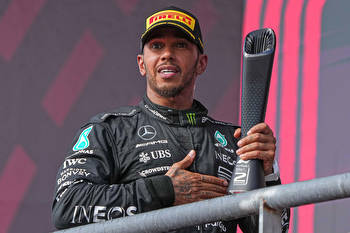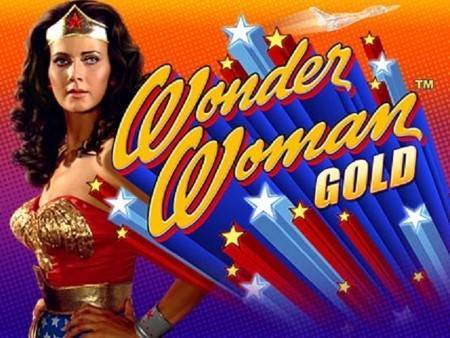F1 may have won in Las Vegas

LAS VEGAS — Midway through his post-race interview, Oscar Piastri paused as the huge fireworks display over the Las Vegas Strip interrupted his train of thought.
“Jesus Christ…” he said, the noise turning everyone’s heads towards the sky. He deadpanned: “Welcome to Las Vegas.”
Even as F1 ended its Las Vegas weekend on a high note with one of the most exciting races of the season, a three-way fight for the win that went down to the closing stages, there was no escaping the significance of the off-track show.
It had been a point of contention for many. Max Verstappen, the eventual race winner, had railed against F1’s Las Vegas race being “99 percent show, one percent sporting event” as early as Wednesday. While some drivers understood the need to embrace the spectacle, they still had a job to do, a race to win, 25 points to fight for. That was their focus.
This was always the dichotomy of the Las Vegas Grand Prix. F1 long planned for this to be so much more than one more race, building it up as one of the greatest spectacles in global sport. Ironically, this actually was one of the more exciting races of the 2023 season, thanks to that thrilling late fight and action throughout the field. To get exciting competitive action, something largely outside of F1’s control, was something nice to have, not a must-have.
It was not a straightforward race weekend by any means. No new races are. But no new races have half a billion dollars spent making them happen. In true Las Vegas style, the stakes were raised.
Walking to the grid on Saturday evening, there was a sense of excitement and nervousness typically reserved for title deciders. After 18 months of preparations and hype building, it was time for F1 to deliver. The chips were down.
What followed ticked all the boxes for a great F1 event. The neon signs along the illuminated Strip made for a spectacular visual. The race itself had a close battle for the win and lots of overtaking, a rarity on a street track. Fears about the cold temperatures making the tires impossible to manage were largely unfounded, even if it was tricky on the run to Turn 1 and on the restarts following the safety car periods when the tires had cooled down.
The track pleasantly surprised the drivers. The layout looked quite simple and may have been compared to an upside-down pig. But the profile of the corners and particularly the long DRS zones meant there were lots of overtaking opportunities.
“I did not expect to have that much fun in the race,” admitted Charles Leclerc, whose successful lunge on Sergio Pérez lit up the last lap. “I’m sure it was a good one to watch. I’ll make sure I watch that one back.” George Russell said it was “surreal” being in Las Vegas, but that the track was “a lot better to drive than anticipated” and had “quite a lot of character.”
That does not mean there are no changes required for the future. Because there are big things that must be addressed.
Changes needed
Although it provided good racing, the circuit needs work. The levels of grip were still incredibly low, as tends to be the case on street tracks. “You have to wrestle the car, but it’s not a feeling you get a lot of feedback from,” Daniel Ricciardo explained. “I think if the grip was higher, it would be more enjoyable.” Carlos Sainz also picked out Turn 12, the corner leading onto the Strip, as being “a bit too dangerous” due to the position of the wall. Steps can be made to try and help on both counts.
The greater calls for change, ironically, related to off-track affairs, namely the scheduling of the race. The 10 p.m. lights out was the latest in F1 history, and the result of a lot of compromises, but the F1 paddock was arguably the biggest loser. Rarely did a conversation go by without someone mentioning how little they’d slept or how confused their body clock was. The delays that led to FP2 finishing at 4 a.m. on Friday didn’t help. Ricciardo said people were “delirious,” while Leclerc thought the late timings were “a bit on the limit.” Piastri said he wished this were the season’s last race so he could go straight home, as he already felt like he was on Australian time.
It is difficult to find the right time to start the race. The push to minimize the disruption of shutting one of the most famous roads in the world means it is not as simple as bringing the start time forward. But it must be something F1 explores because few in the paddock have appreciated such late starts. An 8 p.m. lights out, as we have in Singapore, Qatar and Saudi Arabia, would be more appropriate.
The other factor that made Las Vegas so punishing is what comes now: the trip to Abu Dhabi for the season finale. It’s a journey that takes 16 hours and has a time difference of 12 hours, something everyone must be ready for by Wednesday at the latest. “It’s such a big time shift, especially at the end of a season when everyone is already a bit tired,” Verstappen said. “I think it’s a little bit much. So maybe it would be ideal to find a different date.”
It will only worsen next year: Las Vegas starts a triple-header featuring Qatar and Abu Dhabi to end the year. Ricciardo was shocked to find out that fact on Sunday. “They need to bring it forward because we’ll be wrecked, especially at the end of the season,” he said. Unfortunately, it’s not something that’s viable for next year, and Las Vegas intends to keep this pre-Thanksgiving date slot in the long term. It only adds to the need to try to bring forward the race start time to make the whole weekend a bit easier on the entire paddock.
There are also evident lessons the Las Vegas organizers must learn. The issue with the water valve cover is one that should be easily remedied in the future, as it was learned the hard way. Then there is the tone-deaf handling of the fans in the early hours of Friday morning, forcing them to leave and then offering neither a refund nor an apology but a $200 voucher for merchandise for an event at which they saw a whole eight minutes of on-track action. Announcing on Saturday that ticket deposits were being accepted for 2024 – itself a sign of how expensive the race is to attend – was a bad look.
‘Today’s been fun’
One thing that is unlikely to change is the extravagant nature of the Las Vegas spectacle. The city’s identity and reputation will remain at the heart of the race, ranging from the wedding chapel in the paddock to the number of Elvis impersonators — I’ve genuinely lost count — and the slot machine lever on the timing bridges at either end of the pit lane. It will be authentically Vegas, for better or worse.
Even Verstappen got into the spirit a little after winning, singing “Viva Las Vegas” over the radio as part of a new tradition he agreed to with Red Bull team boss Christian Horner.
But Verstappen denied the race had changed his tune on Las Vegas. “I always expected it to be a good race today,” he said. “Like I said before, long straights, low-speed corners, you don’t lose a lot of downforce. That’s never been my issue. Today’s been fun. I hope everyone enjoyed it.”
Lewis Hamilton urged people on Wednesday to give Las Vegas a chance and not judge before the race. After the race, he admitted being surprised by just how good a track it was, adding: “For all those that were so negative about the weekend, saying it’s all about show, blah, blah, blah… I think Vegas proved them wrong.” It’s not hard to see whom that comment was aimed at.
The race might not have turned Verstappen into a Las Vegas convert, but it proved that what happens on-track can live up to all the hype being built off-track.
For that reason, F1 will surely consider the start of its Las Vegas residency to be a success. There’s room for improvement, yes, but after how things started, it was a huge turnaround for the sport.
By Verstappen’s measurements, the one percent sporting event outweighed the 99 percent show. Few would have fancied those odds on Thursday night.
(Lead photo of Max Verstappen: ANP via Getty Images)



































